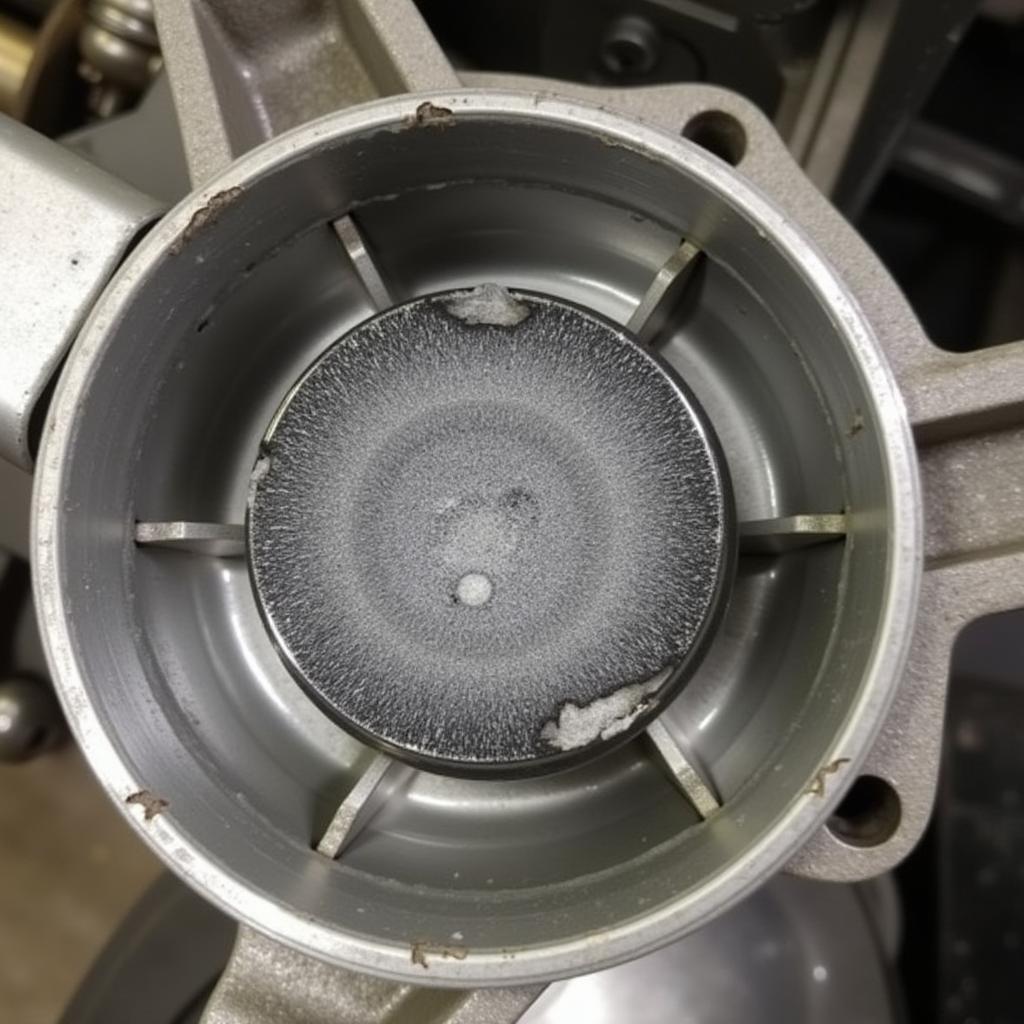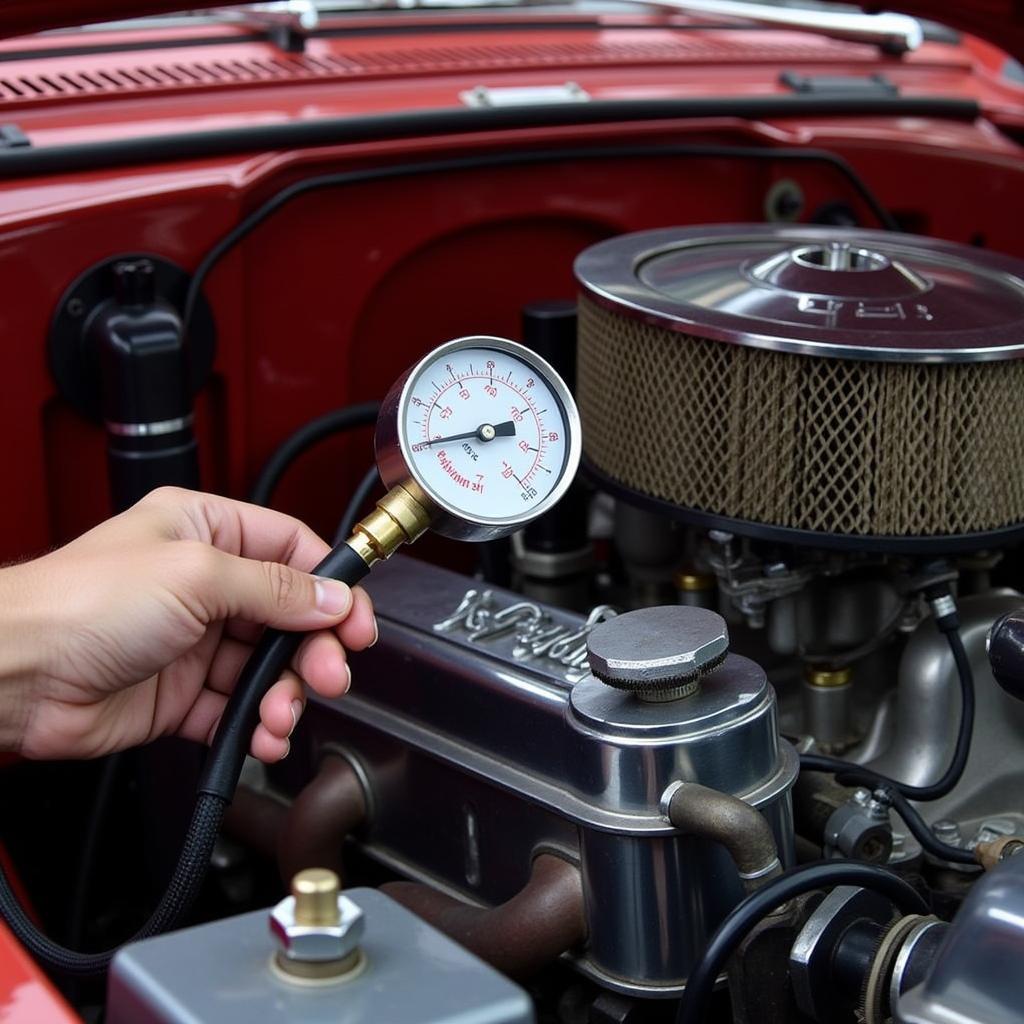Classic Car Fuel Pump Problems can be a real headache for enthusiasts. From sputtering engines to complete stalls, a faulty fuel pump can quickly derail your driving experience. This comprehensive guide dives deep into the common issues plaguing these vital components, offering troubleshooting tips and solutions to get your classic back on the road.
Understanding the Heart of Your Fuel System: The Fuel Pump
The fuel pump is the heart of your classic car’s fuel system, responsible for drawing fuel from the tank and delivering it to the carburetor or fuel injectors. In older vehicles, mechanical fuel pumps, driven by the engine’s camshaft, are common. These pumps rely on a diaphragm to create pressure and push fuel forward. Understanding how these pumps work is crucial for effective troubleshooting. For example, if your car isn’t starting, it could be a fuel problem, just like what’s discussed on our page about car not starting fuel problem.
Common Classic Car Fuel Pump Problems
Several issues can plague classic car fuel pumps. These include:
- Diaphragm Rupture: A torn diaphragm can lead to low fuel pressure or no fuel delivery at all.
- Valve Issues: Stuck or worn inlet and outlet valves within the pump can disrupt fuel flow.
- Weak Fuel Pump Spring: A weakened spring can reduce the pump’s ability to generate adequate pressure.
- Clogged Fuel Lines: Debris or rust in the fuel lines can restrict fuel flow and put strain on the pump.
- Fuel Pump Leaks: Leaks can occur at the pump’s mounting gasket or around the fuel lines, leading to fuel loss and potential fire hazards.
 Fuel Pump Diaphragm Damage
Fuel Pump Diaphragm Damage
Diagnosing Classic Car Fuel Pump Problems
How can you tell if your classic car’s fuel pump is acting up? Here are some telltale signs:
- Engine Sputtering or Stalling: Especially under load or at high speeds.
- Difficulty Starting: The engine cranks but doesn’t fire.
- Reduced Power or Acceleration: The car feels sluggish and unresponsive.
- Vapor Lock: The engine stalls after running for a while, especially in hot weather.
- Unusual Noises from the Fuel Pump: Whining, clicking, or buzzing sounds.
Troubleshooting Your Classic Car’s Fuel Pump
Here’s a step-by-step guide to help you diagnose fuel pump problems:
- Check the Fuel Gauge: Ensure you have enough fuel in the tank. A faulty gauge can sometimes mislead you.
- Inspect Fuel Lines and Filter: Look for kinks, blockages, or leaks. A clogged filter restricts fuel flow.
- Listen for the Fuel Pump: Turn the ignition key to the “on” position without starting the engine. You should hear a faint hum or whir from the fuel pump.
- Check Fuel Pressure: Use a fuel pressure gauge to measure the pressure at the carburetor or fuel rail. Compare the reading to your car’s specifications. You might experience similar issues with your car’s performance at low RPMs, which are discussed on our page car problems at low rpms while driving.
 Checking Fuel Pressure on a Classic Car
Checking Fuel Pressure on a Classic Car
“A simple fuel pressure test can save you hours of frustration and pinpoint the problem quickly,” says John Miller, a seasoned classic car mechanic with over 30 years of experience.
Solutions to Common Fuel Pump Issues
- Replace the Fuel Pump: If the pump is faulty, replacement is usually the best solution. Mechanical fuel pumps are relatively inexpensive and easy to replace.
- Rebuild the Fuel Pump: Rebuilding a fuel pump can be a cost-effective alternative to replacement, especially for rare or hard-to-find pumps.
- Clean or Replace the Fuel Filter: A clogged fuel filter restricts fuel flow and can strain the pump.
- Repair or Replace Fuel Lines: Damaged or corroded fuel lines need to be repaired or replaced to ensure proper fuel delivery.
- Address Vapor Lock: Insulate fuel lines and ensure proper ventilation around the fuel pump to prevent vapor lock. If you’ve ever experienced problems with your Lincoln Town Car’s acceleration, we’ve got you covered. Check out our guide on 99 lincoln town car acceleration problems.
“Don’t underestimate the importance of a good fuel filter. It’s a cheap part that can prevent major headaches down the road,” advises Sarah Chen, a classic car restoration expert.
Conclusion: Keeping Your Classic Car Fueled Up
Classic car fuel pump problems can be frustrating, but with a little knowledge and troubleshooting, you can get your classic running smoothly again. Remember to check your fuel pressure, inspect your lines, and listen for telltale signs of trouble. Addressing fuel pump issues promptly ensures a reliable and enjoyable driving experience. Need help determining a fuel problem on your classic? Check out this resource on how to determine fuel problem on 1988 reluant car.
For any further assistance or expert advice, feel free to connect with us at AutoTipPro. Our contact information is: Phone: +1 (641) 206-8880, Office: 500 N St Mary’s St, San Antonio, TX 78205, United States.




Leave a Reply